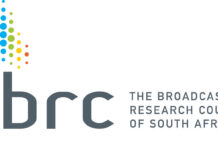Innovation and agility. These are the characteristics of a business that have become crucial to not only its survival but its long-term success as a result of a dynamic and constantly changing market environment.
We all know the famous saying by Greek philosopher Heraclitus – the only constant in life is change – while an oxymoron it has certainly been proven undoubtedly true since the start of the Covid-19 pandemic. The way that people interact with one another, and how businesses interact with their customers, has changed significantly over a short period of time. In a world of social distancing, where face-to-face meetings and first impressions have been replaced with messages on a screen, the importance of effective and authentic digital communication has risen dramatically.
Because of this, businesses have prioritised accelerating digital transformation in order to enable more innovative and agile communications. But simply adopting new technologies into the business does not translate to true transformation. Organisations need to take into account what communications the business is capable of producing and the quality of that communication. In other words, they need to ensure they are making progress in their digital maturity.
It is not the technologies you adopt into a business that fast-tracks transformation, it is a business’ ability to quickly take advantage of those technologies to respond to a rapidly changing environment, overcome new challenges, and create something new or revolutionary. That is digital maturity.
Sending communications through digital platforms is not a true indicator of digital maturity. An email campaign or text notification is just not enough.
Identifying when your digital maturity has stagnated
We know now that digital maturity is not about how much technology you have adopted into the business, or how cutting-edge that technology is. If you’ve integrated a new digital communications system into your business but employees don’t, or simply don’t know how to use it then you are not moving the needle on digital maturity. Here are three simple ways you can identify when your digital maturity has stopped progressing:
- Fragmented ownership of the CX strategy
If your customer experience (CX) strategy is owned by several departments rather than a single owner with a cohesive plan, then a customer’s experience with your business will be just as disjointed. Novice and starter organisations are often characterised by disparate ownership and lack of comprehensive customer journey maps.
Customer experience, not cost cutting, must be at the center of all decisions. When your digital technology decisions are made by those disconnected from the customer experience, like IT, rather than CX professionals, digital maturity will not advance. A good indication of progress, however, is if customer experience is becoming an enterprise wide, C-Level strategic priority.
- No evolution of data strategy or data analytics capability
When you aren’t able to understand your customers, you cannot cater to their needs and expectations. Access to robust data and analytics tools can provide insights into customer behavior in real-time. This information is vital to a business’ ability to measure the performance of each communication against set metrics and to continually refine and improve messaging to a customer.
Additionally, predictive analytics tools can help anticipate what customers may do or need in the future, shifting an organisation from being reactive to proactive in catering to customer needs.
- Customer can choose print or portal, only
Providing a paperless channel is not a sign of digital communications maturity and offers no competitive advantage. Most organisations provide both print and at least one digital channel as a means for customers to receive communication.
The measure of digital maturity progress is whether the customer can choose to receive communications through their preferred channel, and can seamlessly switch between channels whenever they wish. Digital maturity is reached when the customer receives a full omnichannel communication experience.
Effectively moving the dial on digital maturity
To make progress in the digital maturity of communications, businesses first need to create a strategy that clearly lays out a plan for how to do so. Essentially, they need a digital communications maturity framework that provides a picture of how their communication compares in an increasingly competitive and digitally savvy industry.
Without a digital communication transformation plan that specifically aims to grow digital communication maturity, it’s unlikely that a business is making meaningful progress. You might be making changes and enhancements, but these will be tactical, and will not accelerate your evolution to a digitally mature organisation. Successfully executing a maturity framework requires only 4 simple steps:
Step 1 – audit the current digital communication to determine a baseline.
Step 2 – using a digital maturity framework, map the business’ current capabilities and identify a starting position.
Step 3 – define strategies that will move digital communication capabilities along the maturity continuum.
Step 4 – execute, measure and refine.
According to Deloitte, businesses that are digitally mature have an advantage over those who are still transforming when it comes to rapid transformation. Additionally, their Digital Transformation 2020 survey report found that 45% of high maturity companies achieved net revenue growth above industry averages compared to 15% of companies not as highly rated in maturity. And yet, few companies appear to be making the fundamental changes needed to achieve digital maturity.
In a world governed by constant change and uncertainty where customer experience is driving customer retention, repeat purchase rates, customer lifetime value, and revenue growth, it has become imperative that businesses start to invest in experience and enhance their engagement with customers by increasing resilience and efficiency enabled by the progression of their digital maturity.
About Striata
Striata provides strategy, software and professional services that enable digital communication across multiple channels and devices. We are experts in message design, generation, security, delivery and storage.
Clients choose our technology and services to encrypt, send and store confidential documents; execute integrated marketing campaigns; and distribute high volume electronic communications.
The world’s largest financial services, utility, insurance, retail and telecommunications companies trust us to achieve unrivalled results in digital adoption and transformation.
We have operations in New York, London, Johannesburg, Hong Kong, Sydney and partners in North and South America, Africa, Europe and Asia Pacific.




















































































